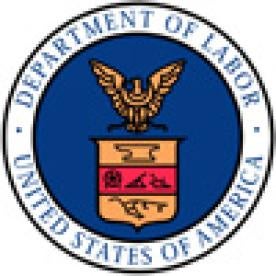The Department of Labor (DOL) has announced a Proposed Rule [pdf] to implement Executive Order 13706, Establishing Paid Sick Leave for federal contractors. As we previously reported, under that Order, beginning January 1, 2017 federal contractors and subcontractors must grant each employee working under covered contracts (or covered subcontracts) one hour of paid sick leave for every 30 hours worked on covered contracts. Employees may accrue up to 56 hours (seven days) of paid sick leave per year. Accrued, unused sick leave will carry over from year to year, subject to the 56‑hour annual accrual cap. The Order applies “to a new contract or contract-like instrument . . . if:
(i)(A) it is a procurement contract for services or construction;
(B) it is a contract or contract-like instrument for services covered by the Service Contract Act;
(C) it is a contract or contract-like instrument for concessions, including any concessions contract excluded by DOL regulations at 29 CFR 4.133(b); or
(D) it is a contract or contract-like instrument entered into with the Federal Government in connection with Federal property or lands and related to offering services for Federal employees, their dependents, or the general public; and
(ii) the wages of employees under such contract or contract-like instrument are governed by the Davis-Bacon Act, the Service Contract Act, or the Fair Labor Standards Act, including employees who qualify for an exemption from its minimum wage and overtime provisions.”
The Proposed Rule, published in the Federal Register today (February 25, 2016), clarifies and defines a number of the Order’s provisions. In addition to providing clarification regarding the use of sick leave, the Proposed Rule clarifies who is subject to the order (i.e., what contractors, subcontractors and employees are covered) and when employees are entitled to sick leave. The coverage provisions are detailed; employers with federal contracts or subcontracts should begin taking steps to review their contracts and the Proposed Rule to determine whether those contracts are covered and thus whether they are subject to the Order’s requirements.
For those employers who are subject to the Order’s requirements, some notable provisions of the Proposed Rule are detailed below; interested parties have until March 28, 2016 to submit comments on the Proposed Rule. The Order requires the DOL to issue a Final Rule by September 30, 2016. The Federal Acquisition Regulatory Council then has 60 days to issue regulations to provide for inclusion of the required contract clauses in Federal procurement solicitations and contracts subject to the Order.
-
The Order only applies to employees who perform work “on or in connection with” covered contracts. Under the Proposed Rule, an employee is considered to be working “on” a covered contract if the employee is directly performing the specific services called for by the contract. An employee is considered to be working “in connection with” a covered contract if the employee is performing work activities that are necessary to the performance of a covered contract but is not directly engaged in performing the specific services called for by the contract itself. The commentary to the Proposed Rule specifically notes that an employer thus may be required to provide paid sick leave to some of its employees but not others. In other words, the fact that an employer has one or more Federal contracts does not mean all of its employees are covered. The employer must keep records adequately segregating non-covered work from covered work, however.
-
The Proposed Rule specifies that employees who perform less than 20 percent of their work in a week in connection with a covered contract are not entitled to accrue any sick leave for that week. This exclusion is not available for employees who actually perform work on one or more covered contracts in a workweek. The commentary explains that this “exclusion could apply to any employees performing in connection with such contracts who are not at any time directly engaged in performing the specific services identified in the contract but whose services or work duties are necessary to the performance of the covered contract.” In calculating hours worked by a particular employee in connection with covered contracts for purposes of determining whether this exclusion may apply, contractors must determine the aggregate amount of hours worked on or in connection with covered contracts in a given workweek by that employee.
-
Under the Order, employees accrue sick leave for “hours worked” on or in connection with covered contracts (unless the exclusion discussed above applies). Employees who work on (or in connection with) one covered project and one non-covered project may only accrue sick leave for hours worked on the covered project. Notably, the Proposed Rule explains that “hours worked” includes time spent in paid time‑off status, such as when an employee is using paid time off provided by the employer (including paid sick leave!). This definition of hours worked is broader than the FLSA and conflicts with the provisions of many employer’s policies (which generally consider “hours worked” to mean time actually spent working).
-
Similarly, an employee need only be permitted to use paid sick leave during time the employee would otherwise have spent working on or in connection with a covered contract rather than time spent performing other work (such as on a private contract), even if that work is for the same contractor.
-
As with state and local sick leave laws, exempt employees may be deemed to have worked 40 hours in a workweek for purposes of sick leave accrual, unless the employee regularly works a different number of hours.
-
Importantly, the Proposed Rule specifies that employers may front-load sick leave—that is, they may provide 56 hours of paid sick leave at the beginning of the year, in which case they do not have to track accrual. However, the employer must allow carryover of up to 56 hours of unused leave to the next year, and cannot limit the amount of sick leave used.
-
The Proposed Rule clarifies that employers may institute an accrual cap of 56 hours. Thus, if an employee accrues 56 hours of the leave, the employee may not accrue any additional leave until he or she uses some of the accrued leave. This provision is similar to provisions in the San Francisco and Santa Monica sick leave laws (but differs from many other state and local sick leave laws).




 i
i

